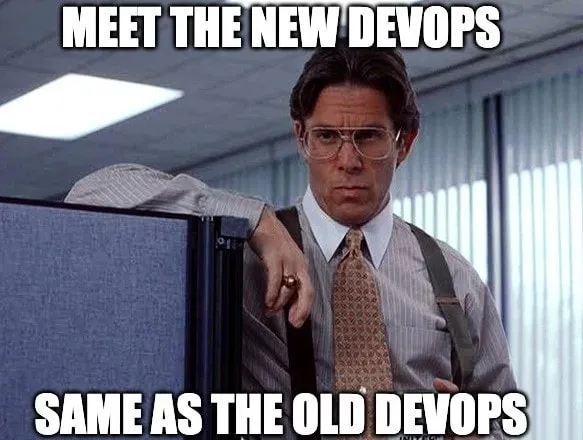Platform Engineering vs. DevOps
Many engineering organizations have recently begun adopting the practice of platform engineering as a way to increase the velocity of new features being released while managing costs. This new approach to the software development process emerged due to the increasing complexity of modern architectures. Its primary focus is to modernize software engineering to match cloud-native applications better. At first glance, it sounds similar to a familiar concept: DevOps. While they share similar goals, we’ve identified three main principles that distinguish them.
What is Platform Engineering?
Platform engineering is an approach that focuses on building and maintaining a centralized and reusable platform for developers within an organization. This platform offers a methodology to streamline software development and deployment processes. It allows a self-service capability that empowers development teams to build, test, deploy, and foundationally operate their applications. A platform engineering team typically creates an Internal Developer Platform, or IDP, which acts as a layer between the developers and the underlying infrastructure/platform engineering tools that enable development. This layer includes the tools, processes, and workflows for each organization’s development pathway. It abstracts away the complexity of infrastructure and development tooling management and reduces the overall cognitive load for developers. In effect, this helps them focus on actually writing the code and delivering features, reducing the amount of management time necessary for the same amount of work.
What is DevOps?
DevOps is a collaborative approach to software development focusing on increasing speed, efficiency, and quality in software development and delivery flow. In essence, it focuses on breaking the silos between development and operations - hence the name DevOps. This approach leverages automation tools to streamline the entire software development lifecycle. Through continuous improvement and delivery, DevOps focuses on surfacing automated processes to merge development and operations as much as possible. DevOps also utilizes infrastructure as code, or IaC, which allows infrastructure management through code and automated tools, further decreasing the brain share dedicated to management processes. Overall, this DevOps process tends to enhance collaborative development and reduce time to market, but it also has tack-on benefits, such as delivering increased software quality, scalable platforms, better scalability, and much more.
How is Platform Engineering Different from DevOps?
The term Platform Engineering (PE) continues to evolve, but fundamentally, it encompasses the practice of building and maintaining the foundational infrastructure and systems that support business-critical applications. That usually means pursuing excellence in the domains of continuous integration and continuous delivery, system performance engineering, security, infrastructure, tooling and most importantly for this discussion, developer experience. Platform engineering teams are responsible for building and maintaining an internal developer platform (IDP). These internal platforms are designed to improve developer self-service, reduce cognitive load, and automate certain repetitive tasks, boosting developer productivity and accelerating the software development lifecycle. In many ways, this is an evolution of the discipline of Site Reliability Engineering, DevOps, and even systems administration.  While PE may include disciplines like DevOps, it is a much more expansive domain with a different approach. The differences seem subtle but lead to very different outcomes. In practice, DevOps engineers mainly focus on applications once they hit production. That means focusing mainly on API observability and security with little time left over for developer experience. At its root, API observability makes applications more… observable. That means improving the quality of application telemetry like logs or metrics. That’s a great start, but my observation is that PE extends the definition of “observable” into experiments designed to expose the behavior of the system. DevOps processes focus on passive automation, while PE is about active experimentation. DevOps processes focus on passive automation, while Platform Engineering is active experimentation.
While PE may include disciplines like DevOps, it is a much more expansive domain with a different approach. The differences seem subtle but lead to very different outcomes. In practice, DevOps engineers mainly focus on applications once they hit production. That means focusing mainly on API observability and security with little time left over for developer experience. At its root, API observability makes applications more… observable. That means improving the quality of application telemetry like logs or metrics. That’s a great start, but my observation is that PE extends the definition of “observable” into experiments designed to expose the behavior of the system. DevOps processes focus on passive automation, while PE is about active experimentation. DevOps processes focus on passive automation, while Platform Engineering is active experimentation.
Principle 1: Feedback loops vs automation
The existence of strict human-driven software testing processes should be viewed as an admission of failure. Abide by this maxim, and many things in the cloud-native world will get easier. More broadly, platform engineering focuses on feedback loops connecting humans to machines (or machine intelligence) rather than just automation. In the early days of DevOps it was a significant efficiency improvement to simply automate deployment using Jenkins. PE, however, takes this practice further than automated deployments by creating a system that developers can directly experiment with. The difference is subtle, but the results can be enormous.  For example, let’s consider three feedback loops and their consequences:
For example, let’s consider three feedback loops and their consequences:
1) Test in prod with fast rollback, features flags, and limited blast radius
Testing in production environments is excellent for having a fast feedback loop, but it can come at a great cost: your customers end up as crash test dummies. It can be passable in some situations, like for a content feed you can refresh. However, it becomes less acceptable when it’s something more oriented around guaranteed delivery, like a bill-pay service. The other big disadvantage of this approach is that it requires highly skilled software developers to make intricate decisions about infrastructure design and feature scope to limit the blast radius.
2) Microservices architectures
When microservices became popular, they solved a key problem by reducing the scope of what each engineering team needed to know. The smaller the immediate codebase, the faster the feedback loop. However, the complexity didn’t go away; it simply moved. Issues manifest only in the staging environment because the problems move to the interactions between components. Or said differently, debugging involves tracing an extensive system instead of tracing code in a monolith.
3) Traditional performance testing and regression testing
A formalized software testing process prevents many errors from escaping to production. That’s pretty much the only upside. The downsides are the expense, the fragility of the process, and the tax on development velocity. Most organizations are abandoning manual testing. Platform Engineering should focus on reducing the cost of experimentation while managing tradeoffs. Automating is not enough.
Principle 2: Platform includes the developer desktop
Every engineer knows the value of running the entire system on their laptop. The ability to tinker, rewire, and refactor without breaking a real system is invaluable for increasing velocity. That may not be possible for many applications, but giving developers their own sandbox is still crucial. For this reason, platform engineering expands the definition of “platform” to include the dev environment and tooling. DevOps focuses mainly on automating the delivery of the production application and its infrastructure, while PE focuses on automating the delivery of the developer test environments as well. Most organizations implement one of the following patterns:
- Packaging the application, including test and mock data, so that it can be simulated on a laptop
- On-demand preview environments, typically built with each merge request and managed by tools like Argo and Flux
- Ephemeral service isolation test environments, either local or in a cloud provider like Speedscale
- Realistic centralized test environments with traffic rerouting like Telepresence
Generally, the platform engineering team manages these systems as a service to the broader engineering team. They need to be managed and designed along with the application. 
Principle 3: Everything is ephemeral
Most DevOps practitioners are familiar with the idea of Infrastructure as Code (IaaC) where an entire application environment can be reproduced with the press of a button. This is an excellent start, but Kubernetes takes it further by introducing the idea that everything is short-lived. Instead of carefully crafting virtual machines and software defined networking rules, best practices now say we design systems around short-lived containers with elastic scaling.
Kubernetes preview environments: adoption, use cases & implementations
Learn what Kubernetes preview environments are, how they’re used and why they’re growing in popularity Read The Blog This shift accelerates development processes in a variety of ways, from testing to rollbacks. Here are a few specific applications of this idea and its advantages:
1) Data portability
If your data is stored as JSON files in the cloud, it can be moved and repurposed easily for different use cases. Backups are simple because it’s just copying files. Analytics are easy because you can just ask Athena, BigQuery, Snowflake, etc to traverse it. Machine Learning training becomes easier because the dataset can be segmented and passed around. Compare this with the relational databases of yore with their proprietary formats and backup systems.
2) Testing
How can stable tests be written when the APIs and applications are constantly changing? Stop trying and utilize ephemeral traffic replay instead. The tests and mocks are always refreshed from real user behavior.
3) Engineering velocity
Some organizations stand up complete application preview environments for every merge request. These environments may live for an hour or less but they let reviewers interact with the running application and see the code in action. When they’re done, the environment disappears.
4) Security
It’s harder to get taken in by ransomware if you can press a button and rebuild your systems from code and restore your data. The easiest way to get started with this concept is to convert your infrastructure to a system like Terraform, CloudFormation or a similar tool. As you progress, it becomes necessary to shift to a modern container management system like Kubernetes. Some organizations invest in portals for full deployment automation. 
Key takeaways
🚫 DON’T treat PE as a rebranding of DevOps ✅ DO learn more about these three key principles and how they apply to your technology stack 🚫 DON’T leave the developer experience as an afterthought ✅ DO design your application platform so it can be scaled up and down 🚫 DON’T treat development and deployment as a linear process ✅ DO identify feedback loops and reduce experimentation effort 🚫 DON’T create static processes and artifacts like virtual machines or testing plans ✅ DO create always-up-to-date feedback loops
Platform Engineering vs DevOps: Comparison Table
Scope and Focus
To provide self-service capabilities and reusable tools for developers.
To accelerate software delivery and improve collaboration between teams.
Outcome
Centralized platform and infrastructure development.
Processes and collaboration across the software delivery lifecycle.
Support Structure
Dedicated platform engineering team.
Cross-functional teams including developers, operations, and QA.
Tooling
Platform tools like Kubernetes, Terraform, and Jenkins.
DevOps tools like Docker, Git, and Ansible.
Output
Standardized CI/CD pipelines, consistent environments, and reusable components.
Faster deployment cycles, improved system reliability, and enhanced collaboration.
A Brief History: Platform Engineering and DevOps
Platform Engineering and DevOps development are closely intertwined. As long as developers have had resources to manage, resource management has always been front of mind as a place where efficiency could significantly impact developers.
DevOps History
DevOps emerged in the late 2000s as a response to the growing disconnect between development and operations teams. This disconnect too often resulted in slower deployment arising from operational inefficiencies, and this inefficiency was a key area of focus for improvement. As more focus was placed on this efficiency, there started to be a focus on the silos that existed between each system - the core idea being that breaking these barriers could increase velocity and efficiency in other areas as well, thereby providing an overall boost. The term “DevOps” was first popularized during the 2008 Agile Conference, where Patrick Debois and others advocated for better collaboration between these traditionally siloed teams. Following this, the movement gained momentum with the adoption of Agile methodologies, which emphasized iterative development. Over time, tools like Jenkins, Puppet, and Docker became integral boosts to DevOps practices, enabling automation, continuous integration/continuous delivery (CI/CD), and improved collaboration. By fostering a culture of shared responsibility, DevOps transformed how organizations deliver software, prioritizing speed, reliability, and customer satisfaction.
Platform Engineering History
The platform engineering initiative evolved more recently as organizations sought to standardize and simplify the complex ecosystems created by DevOps practices. With the proliferation of microservices, containerization, and cloud-native applications, developers faced increasing challenges in managing infrastructure and tools, which introduced a significant cognitive load for developers. This was particularly frustrating because DevOps was meant to reduce this headache. Platform engineering emerged to address these issues by creating centralized platforms known as Internal Developer Platforms, or IDPs, to abstract away infrastructure complexity and provide self-service capabilities. By providing self-service functionality, the idea was that developers would again spend less time focusing on infrastructural provision and more time on development, deployment, and iteration, thereby gaining huge benefits in productivity. This discipline gained traction in the 2010s with the rise of platforming engineering tools like Kubernetes, Terraform, and others that enable the creation of scalable and reusable platforms. Platform engineering complements DevOps by providing developers with the tools and environments needed to focus on coding while operations teams ensure the underlying infrastructure remains efficient and reliable.
Which is Better: Platform Engineering or DevOps?
Choosing between Platform Engineering and DevOps comes down to the organization’s specific needs, goals, and challenges. Both options are strong choices, and in many cases, they are complimentary, not competing. For this reason, it’s better to consider this question in terms of the strengths of each offering.
DevOps Strengths
DevOps focuses on improving collaboration between development and operations teams, streamlining workflows, and accelerating software delivery through solutions like continuous integration/continuous delivery (CI/CD). This ultimately results in a more scalable infrastructure that excels at integrating development tools and processes with the development tasks at hand, abstracting a lot of the complexity of the development process. For this reason, DevOps is ideal for organizations trying to adopt agile practices and automated solutions. DevOps fosters a strong culture of shared responsibility and iteration, which can be crucial for teams focused on agility and marketing timing with quick deployment.
Platform Engineering Strengths
Platform engineering is centered on creating and maintaining internal platforms that are reusable and centralized, simplifying the complexities of infrastructure management and provision for developers. It’s great for organizations with large-scale, cloud-native architectures or other complex setups leveraging cloud computing and storage. This solution is ideal for anyone seeking an Internal Developer Platform to reduce complexity and the cognitive load inherent in infrastructural management. It is particularly beneficial for companies that have already implemented DevOps but need to scale their processes or optimize developer efficiency.
Which Should You Choose?
If your organization is in the early stages of adopting agile or DevOps principles, starting with DevOps practices is an excellent option as it lays the groundwork for collaboration and automation. For mature organizations facing scalability challenges, platform engineering can complement existing DevOps efforts by providing structured, self-service tools and environments. Ultimately, both practices are more effective when used together. DevOps drives cultural and process changes, while platform engineering creates the technical infrastructure that supports those changes. The choice between the two is less about “better” and more about aligning the approach to your current organizational maturity and long-term goals.
Conclusion
You can start building your Internal Development Platform (IDP) with Speedscale today!  By recording production traffic and replaying it in test environments, Speedscale enables developers and platform engineers to build their IDP with realistic data and mocks. Learn more about production traffic replication in our Definitive Guide to Production Traffic Replication and Replay, or sign up below to try us out for free.
By recording production traffic and replaying it in test environments, Speedscale enables developers and platform engineers to build their IDP with realistic data and mocks. Learn more about production traffic replication in our Definitive Guide to Production Traffic Replication and Replay, or sign up below to try us out for free.